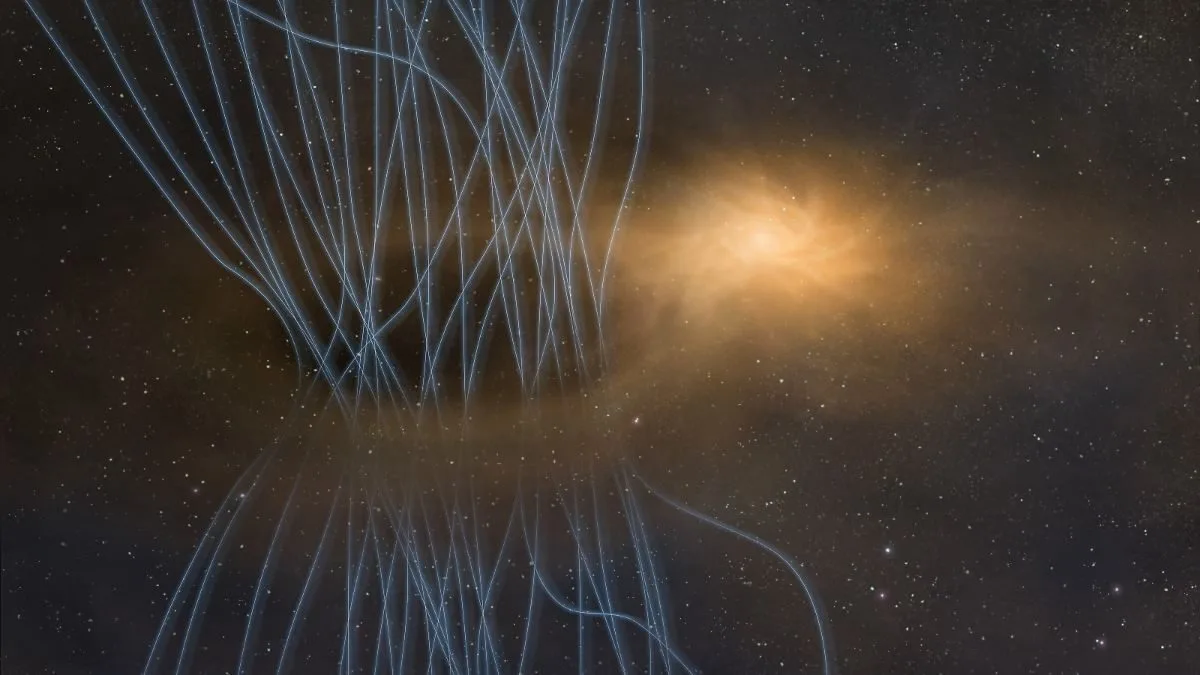Fountain-like emissions
Astronomers observe stars while sneezing
April 12, 2024, 1:41 p.m
Listen to article
This audio version was artificially generated. More info | Send feedback
A star is formed when clouds of dust and gas contract due to their own gravity. That’s the simple representation. Astronomers from Japan observe how a young star then breaks away from magnetic fields from a distance of 450 light years.
When people sneeze, they are clearing their upper respiratory tract. When young stars sneeze, they rid themselves of excess magnetic fields. A research team from Japan has now come to this conclusion. The astronomers observed a forming star with the large ALMA telescope system in Chile and discovered fountain-like emissions of gas, dust and magnetic fields. Such “sneezes” could play an important role in star formation, the scientists write in the “Astrophysical Journal.”
Stars form in large clouds of gas and dust that slowly contract under their own gravity. In particularly dense regions, protostars form, usually surrounded by rotating disks of gas and dust. During these processes, however, the initially weak magnetic field in the original cloud also strengthens.
“If this magnetic field were preserved during star formation, it would be many orders of magnitude stronger than the magnetic fields actually observed in young stars,” explains Kazuki Tokuda from Kyushu University in Japan. In a previously unknown way, a forming star must lose a large part of its magnetic field.
Observations 450 light years away
To investigate this phenomenon, Tokuda and his colleagues used ALMA to target the star-forming region MC 27, 450 light-years away, in the constellation Taurus. The “Atacama Large Millimeter/Submillimeter Array” consists of a total of 66 antennas with a diameter of seven to twelve meters. The international facility is located on the 5,000 meter high Chajnantor Plateau in the Atacama Desert in the northern Chilean Andes. It covers a range of radio radiation that is particularly suitable for observing the formation of stars.
The ALMA observations show a small protostar in the region surrounded by a rotating disk where planets could form in the future. “However, as we further analyzed the data, we discovered something completely unexpected,” reports Tokuda. “We saw sharp structures protruding far from this disk.”
Sneezes are common phenomena
It turned out that these fountain-like “spikes” consist of gas and dust that are ejected from the disk – carried away by strong magnetic fields. The trigger may be instabilities in which parts of the magnetic field suddenly separate from the main field. The researchers named the emissions “sneezes” because they occur suddenly and at high speed, similar to sneezing in humans.
In addition, Tokuda and his colleagues found many filaments of gas and dust at greater distances from the protostar and its disk. According to the researchers, this is probably the sputum from previous sneezes. Such ejections are not a one-time phenomenon, but rather a frequently occurring phenomenon. Thus, stellar sneezers could be an important mechanism for weakening the magnetic field of a forming star. With further observations, the astronomers now want to find out exactly how the sneezes come about.



